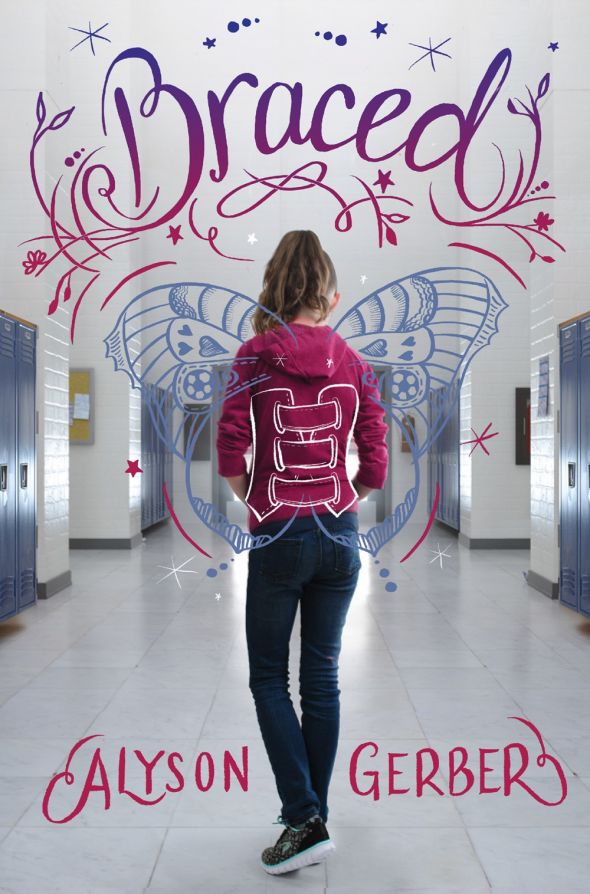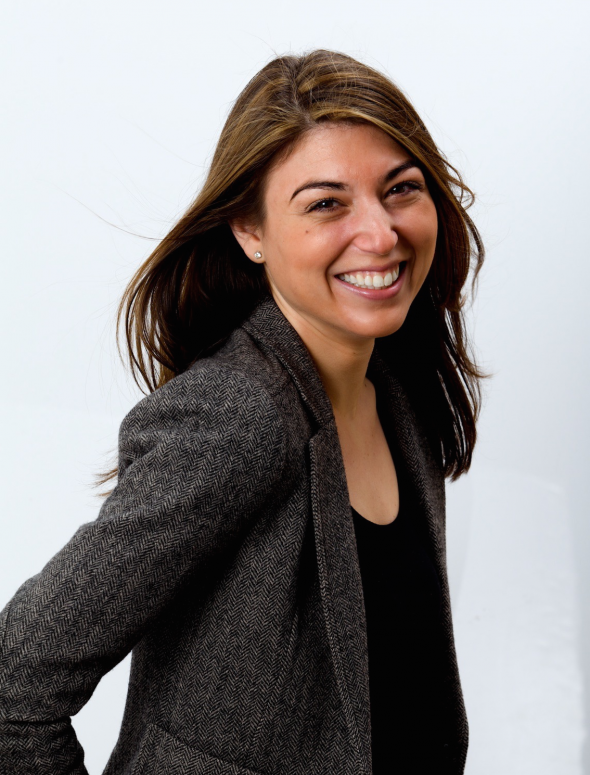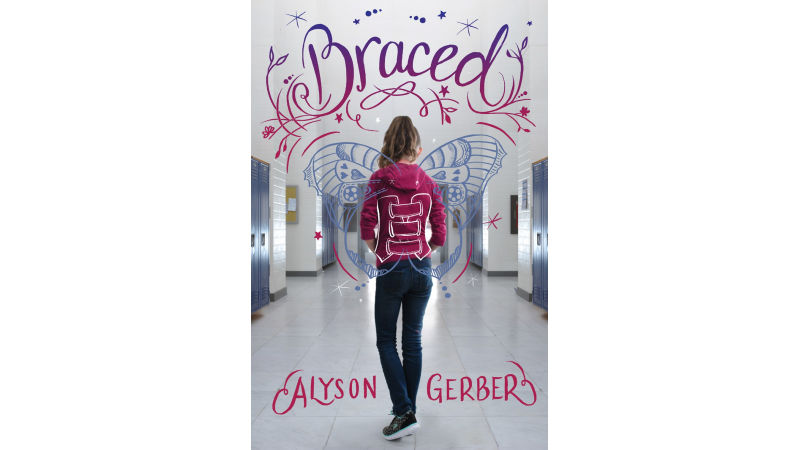 Today, we have the pleasure of introducing you to debut author Alyson Gerber, whose brave new novel, Braced, explores a disorder that bends the lives of ten percent of all teenagers: scoliosis. The book was inspired by the author’s own childhood experience. Editorial Director David Levithan joins Alyson to ask a few questions.
Today, we have the pleasure of introducing you to debut author Alyson Gerber, whose brave new novel, Braced, explores a disorder that bends the lives of ten percent of all teenagers: scoliosis. The book was inspired by the author’s own childhood experience. Editorial Director David Levithan joins Alyson to ask a few questions.
David Levithan: First, I’ll ask you the Great Authorial Paradox question – namely, what do you think your 11-yr-old self would have gotten from Braced?
Alyson Gerber: When I was 11, I didn’t know anyone else who had to wear a back brace twenty-three hours a day, and my mom was actually the only other person I knew who’d been treated for scoliosis. Reading Braced would have given me a chance to hear from someone my own age who was going through a similar experience and managing this really big responsibility. I think ultimately Rachel’s story would have made me feel understood, less alone, and like I wasn’t the only one who felt different.
DL: Even though scoliosis affects so many kids, particularly girls, there are surprisingly few novels that explore what it’s like to live with it. In fact, Judy Blume’s Deenie is still the definitive book on the subject – and it was written in 1973. What was it like to reflect on the effects of scoliosis now, as opposed to then?
AG: I think it’s always been hard to be different in middle school—when Deenie was written, when I wore a back brace, and now—but being treated for scoliosis has changed a lot since 1973. For one thing, the brace has changed significantly from a metal body brace to a plastic shell with padding and Velcro straps, making it slightly easier to move around and get dressed and get in and out of your brace. Also, most doctors today work with their patients to make sure they’re both wearing their brace for enough hours and also participating in the activities they love, whether that’s playing soccer, like Rachel does in Braced, or modeling and cheering, like Deenie.
 DL: Your editor also had scoliosis as a teen, and you talked to other people who had scoliosis while writing the book – what insight did this give you?
DL: Your editor also had scoliosis as a teen, and you talked to other people who had scoliosis while writing the book – what insight did this give you?
AG: I had a really difficult time adjusting to my brace. I felt isolated from my friends and like everyone could see that there was something really wrong with me. In writing Rachel’s story, I had the chance to meet a lot of people, including my editor, who had very different responses to being braced. She found her brace reassuring and comforting, like a protective shell, keeping her spine straight as she grew. It made her feel strong and safe. Connecting with people who had been through a similar experience, but who had a totally different perspective, allowed me to see the positive, important, and occasionally funny impact wearing a brace had on my life. Through these conversations, I realized that scoliosis was so pivotal to who I am now, and being braced made me a stronger, more capable, and more empathetic person.
DL: There’s also a family element to the story, and to your approach – can you talk about what insights your own family history with scoliosis – and your dad’s current position – gave you? And how does your family feel about having an author in the family?
AG: My mom had a very outdated spinal fusion on November 2, 1969 and was subsequently on bed rest in a body cast for six months, followed by two-and-a-half years in a metal back brace. The experience was traumatic for her entire family, and after her brace came off, they never really talked about scoliosis or what she had been through again. Everyone wanted to move on. So when my dad, who is an orthopedic surgeon, spotted my scoliosis early on, it was like ripping open a wound that had never really healed. For me, writing Braced was a chance to dig deep into my own personal experience. I talked to my parents and grandparents at length about their experience, and I used published orthopedic research and contacts that my dad sent me in order to inform the story.
My family is very proud of me and of this book. They are hopeful that Braced will help not only kids who are being treated for scoliosis but also their families.
About Alyson Gerber
Alyson Gerber wore a back brace for scoliosis from the ages of eleven to thirteen, an experience that led directly to Braced, her first novel. She received her MFA in Writing for Children from the New School, and her essays have been published in everything from Chicken Soup for the Soul: The Magic of Mothers & Daughters to romance-advice websites. She lives with her husband in Brooklyn, New York. Please visit her on the web at alysongerber.com and on Twitter at @alysongerber.



